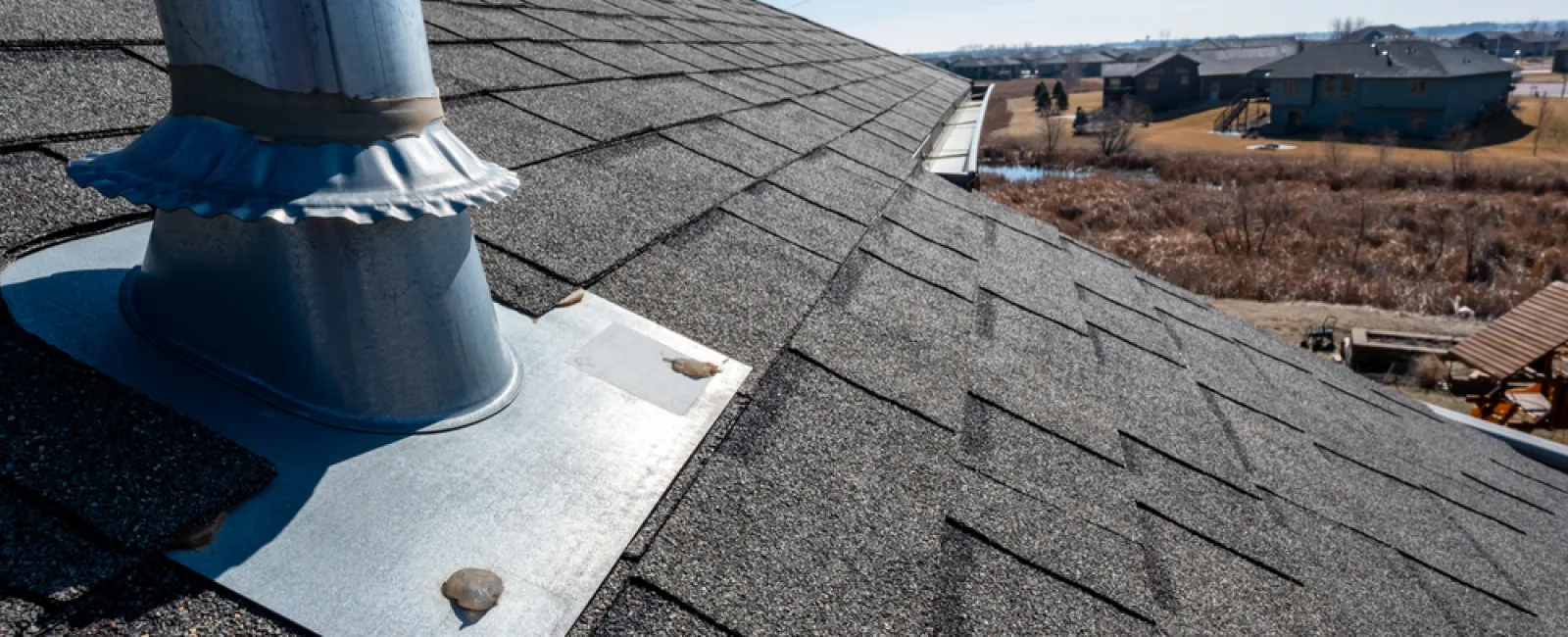When it comes to maintaining your home, roof flashing plays a
crucial role. Understanding what flashing is and its importance can save you
from potential headaches and costly repairs. Whether you're new to
homeownership or just looking to expand your knowledge, this guide aims to
provide you with clear and practical information about roof flashing.
What is Roof Flashing?
Roof flashing is an essential part of your roofing system that
often goes unnoticed. It's typically made from thin metal sheets like aluminum
or copper and is designed to direct water away from areas where your shingles
meet up with another structure. These areas include places where the roof meets
walls, around chimneys, vent pipes, and in roof valleys. Flashing acts like a protective barrier, ensuring that
water doesn't seep into your home and cause leaks or structural damage. Without
it, your home would be much more vulnerable to water-related issues, such as
mold, mildew, and even serious structural problems. Essentially, flashing
serves as the first line of defense against water infiltration, making it
crucial for keeping your home dry and safe. By effectively channeling water off
the roof and into the gutters, flashing helps maintain the overall health of
your roofing system.
The Importance of Roof Flashing
Roof flashing is vital for protecting your home from water damage. Even a tiny leak can lead to big problems over time, affecting your home's insulation, structural components, and interiors. Flashing acts as a barrier, keeping water from penetrating your roof's surface. Without properly installed and maintained flashing, your roof becomes vulnerable to leaks and water damage, which can lead to costly repairs.
Flashing also plays a key role in extending the lifespan of your
roof. By directing water away from critical areas like roof valleys, chimneys,
and vent pipes, flashing helps to prevent water from
pooling and causing rot or mold. This, in turn, keeps the structural integrity
of your home intact and maintains its energy efficiency.
Different Types of Roof Flashing
Understanding the different types of roof flashing can help you make informed decisions about your roofing needs. Here are some common types:
- Step flashing: Used where the roof meets a vertical surface, step flashing is installed in layers to channel water downwards. This type of flashing is particularly effective for preventing leaks where the roof joins a wall.
- Counter flashing: Often paired with base flashing, counter flashing is installed opposite it to provide additional protection.
- Base flashing: This type of flashing is utilized on roof features like chimneys, which require two forms of flashing. This type of setup ensures that no matter how or where the rain falls, it is guided away from the vulnerable spot in the roof.
- Valley flashing: Placed in the valleys of a roof, this type of flashing funnels water down to the gutters. It is crucial for areas that naturally collect a lot of water, ensuring it flows off the roof efficiently.
- Drip edge: Placed along the edges of the roof, drip edge flashing helps guide water into the gutters and prevents it from soaking into the fascia boards. This type is essential for maintaining the edge integrity of your roof.
- Vent pipe flashing: Designed specifically for sealing around vent pipes, this flashing prevents leaks at these common entry points.
Each type of flashing has a specific role in directing water away
from critical areas on your roof, ensuring your home remains dry and safe.
Common Materials Used in Roof Flashing
Roof flashing can be crafted from various materials, each offering distinct advantages:
- Aluminum: This material is both lightweight and resistant to corrosion when coated properly. Aluminum is easy to shape and can be painted to match your roof's color, making it a popular choice for many homeowners. However, it's not generally recommended in beachfront areas, as it may not stand up to water flow in these regions.
- Copper: Known for its durability, copper flashing has a long lifespan. Over time, it develops a protective green patina that adds an aesthetic touch. However, it's usually more expensive than other materials.
- Galvanized steel: Coated with zinc to resist rust, galvanized steel is strong, lightweight, and long-lasting. It's an economical option, though it might need more upkeep compared to other materials.
There are many other options available, which you can discuss
with your roofing professional.
Warning Signs That You Need Flashing Repair or Replacement
To keep your home safe from water damage, it's crucial to know when your roof flashing needs repair or replacement. Spotting water stains on your ceilings or walls can be a red flag. These stains indicate that water is making its way into your home, likely due to compromised flashing.
Regularly inspect your roof for any signs of bent, cracked, or missing flashing. Damaged flashing can't effectively keep water out, putting your home at risk for leaks. Over time, metal flashing can rust or corrode, especially in moist environments. Rusty flashing loses its strength and can eventually allow water to seep through.
The presence of mold or mildew, particularly in your attic or on ceilings, suggests a moisture problem. Faulty flashing could be letting water in, providing the perfect conditions for mold growth.
Looking for more personalized guidance regarding your roofing needs? Call Master Roofers at 603-623-4973 or reach out online for your quick and easy roof quote.
Learn more by checking out our guide to the anatomy of your roof.

